Meskhenet: Egyptian Goddess Of Household And Childbirth Who Governed Over Fate And Destiny
A. Sutherland - AncientPages. com - In ancient Egyptian beliefs, Meskhenet (Meskhent) was a goddess associated with childbirth, motherhood, and destiny. By breathing into each newborn child, Meskhenet gave each child, Ka a part of their soul.
Representation for Meskhenet. Image credit: Rowanwindwhistler - CC BY-SA 3.0
The goddess was responsible for creating the Ka and therefore, she was associated with fate, because, at the time of a child’s birth, she determined its destiny.
From the New Kingdom (1550-1069 BC) onwards, this particular role of Meskhenet was taken by the male god Shai (Shay) that symbolized the concept of fate in Egyptian mythology. Sometimes, Shai was believed to be a female, and another time, he was Meskenet’s husband. Both are mentioned in the Book of the Dead.
Meskhenet's name can be interpreted as "happening" or "coincidence", as the coincidence of the omens usually accompany birth and determine destiny, but she was also known as Meskhenet ('The Place of Alighting'). She was a highly respected household deity, mentioned in a large number of prayers and hymns, and venerated from the earliest of times by ancient Egyptians.
There was no cult site devoted to her.
Meskhenet Depicted On Birthing Bricks
Most of Meskhenet’s depictions were found on birthing bricks. In ancient Egypt, women delivered babies while squatting on a pair of bricks, known as birth bricks, and Meskhenet was the goddess associated with this delivery tradition.
Relief in the interior of the Hathor Temple of Deir el-Medina ("Monastery of the City"), Ancient Egyptian Set Maat ("Place of Truth"), in Thebes West at Luxor, Egypt. IMage credit: Olaf Tausch - CC BY 3.0
She was sometimes depicted with the characteristic headdress of a cow's uterus, and her head probably symbolized the womb while other depictions showed her as a birthing brick with a human head.
In her hand, she is holding an ankh, the symbol of life.
In ancient Egyptian tradition, birthing bricks played an important role.
"Birthing bricks were carried in and a simple construction soon took shape in the middle of the room which looked like a stone stool. When the labor pains became insistent Hatshepsut would be lifted onto this device and this would make the delivery of the baby easier for the mother while allowing the attendant midwives access to assist in the delivery.
Bowls of oil were brought in and two of the ladies began to gently massage the arms, neck, and shoulders of the queen in order to help her to relax while perfumes and blocks of incense were burned to provide a restful and pleasing atmosphere.
While all these preparations were being carried out Hatshepsut was aware of little other than the presence of the child whom she had carried for nine months and who was now insisting in a most vigorous way to be allowed to make its entrance into the world. Two of the ladies-in-waiting soothed the queen’s forehead with cool cloths and several priestesses chanted invocation to [Taweret] Tauret, the hippopotamus goddess of childbirth to ensure a safe and trouble-free birth...." (Poorta, Glenys , "Hatshepsut The Queen who was King".
Meskhenet Was Also A Funerary Goddess
According to ancient Egyptian Papyrus Westcar, the goddess Meskhenet was involved in giving a prophecy at the birth of the first three kings Userkaf, Sahure, and Neferirkare Kakai of the 5th Dynasty (2494-2345) who would become rulers of Egypt.
All three of them were buried at Abusi ("the House or Temple of Osiris"), the ancient site with an extensive necropolis dated to the Old Kingdom.
However, Meskhenet was not only related to birth and fate. She was also a funerary goddess participating at the judgment of the deceased helping them in their rebirth in the afterlife.
This role she played was somewhat similar to that Meskhenet had in life (or more exactly, at the beginning of life). Both Egyptian gods Anubis and Meskhenet participated in afterlife ceremonies but their responsibilities were different.
Written by – A. Sutherland - AncientPages.com Senior Staff Writer
Copyright © AncientPages.com All rights reserved. This material may not be published, broadcast, rewritten or redistributed in whole or part without the express written permission of AncientPages.com
Expand for referencesReferences:
Müller M. Egyptian Mythology
Pinch G. Egyptian Mythology
Wilkinson R. H., The Complete Gods and Goddesses of Ancient Egypt
More From Ancient Pages
-
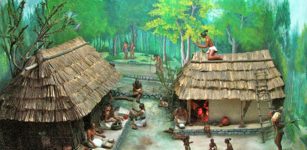 Daily Life Of Ancient Maya
Ancient History Facts | Oct 12, 2020
Daily Life Of Ancient Maya
Ancient History Facts | Oct 12, 2020 -
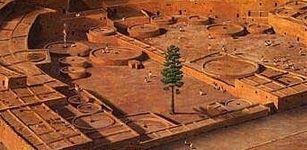 Ponderosa Pine: Life And Death Of One Of America’s Most Mysterious Trees
News | Mar 18, 2020
Ponderosa Pine: Life And Death Of One Of America’s Most Mysterious Trees
News | Mar 18, 2020 -
 Legendary Sea Monster Exists: Icelandic Government Commission Says
Featured Stories | Sep 27, 2014
Legendary Sea Monster Exists: Icelandic Government Commission Says
Featured Stories | Sep 27, 2014 -
 Mystery Of The Österödskvinnan (Österöd Woman) Who Lived In Sweden 10,000 Years Ago
Featured Stories | Nov 6, 2023
Mystery Of The Österödskvinnan (Österöd Woman) Who Lived In Sweden 10,000 Years Ago
Featured Stories | Nov 6, 2023 -
 Mystery Of A 5,000-Year-Old Mass Grave In Poland Reveals A Family Tragedy
Archaeology | May 14, 2019
Mystery Of A 5,000-Year-Old Mass Grave In Poland Reveals A Family Tragedy
Archaeology | May 14, 2019 -
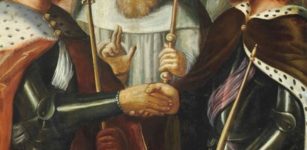 On This Day In History: Treaty Of Picquigny – Negotiations Between England And France – On Aug 29, 1475
News | Aug 29, 2017
On This Day In History: Treaty Of Picquigny – Negotiations Between England And France – On Aug 29, 1475
News | Aug 29, 2017 -
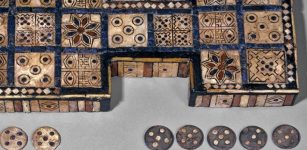 Royal Game Of Ur – One Of The Oldest Game Boards Discovered
Ancient History Facts | Feb 3, 2016
Royal Game Of Ur – One Of The Oldest Game Boards Discovered
Ancient History Facts | Feb 3, 2016 -
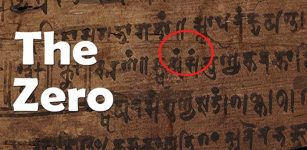 Is The World’s Oldest Zero Hidden In The Bakhshali Manuscript?
Archaeology | Oct 28, 2017
Is The World’s Oldest Zero Hidden In The Bakhshali Manuscript?
Archaeology | Oct 28, 2017 -
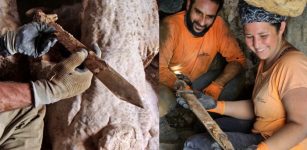 Four Rare And Incredibly Well-Preserved 1,900-Year-Old Roman Swords Found In Judean Desert
Archaeology | Sep 6, 2023
Four Rare And Incredibly Well-Preserved 1,900-Year-Old Roman Swords Found In Judean Desert
Archaeology | Sep 6, 2023 -
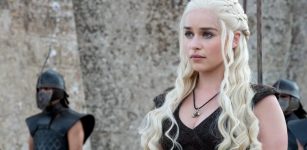 Ambition, Greed And Death: The Roman Roots Of ‘Game Of Thrones’
Featured Stories | Jul 2, 2019
Ambition, Greed And Death: The Roman Roots Of ‘Game Of Thrones’
Featured Stories | Jul 2, 2019 -
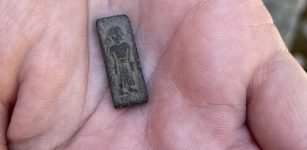 Rare And Tiny Ancient Stamps Found In Falster May Show The Way To An Unknown King’s Home
Archaeology | Jul 26, 2023
Rare And Tiny Ancient Stamps Found In Falster May Show The Way To An Unknown King’s Home
Archaeology | Jul 26, 2023 -
 Unexplained Visions Of Airmen – Strange Presence And Disturbances – Part 1
Featured Stories | Feb 6, 2020
Unexplained Visions Of Airmen – Strange Presence And Disturbances – Part 1
Featured Stories | Feb 6, 2020 -
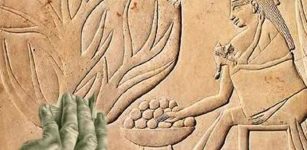 Being Left-Handed Was A Sign Of Evil Until Only Recently
Ancient History Facts | Jun 29, 2018
Being Left-Handed Was A Sign Of Evil Until Only Recently
Ancient History Facts | Jun 29, 2018 -
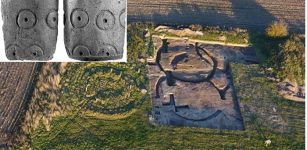 Dazzling Time Capsule Of Unique Iron Age Artifacts And Celtic Roundhouses Discovered In England
Archaeology | Mar 15, 2022
Dazzling Time Capsule Of Unique Iron Age Artifacts And Celtic Roundhouses Discovered In England
Archaeology | Mar 15, 2022 -
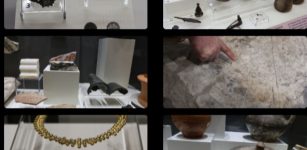 Magnificent Ancient Artifacts Found In Bulgaria Last Year Go On Display
Archaeology | Feb 14, 2023
Magnificent Ancient Artifacts Found In Bulgaria Last Year Go On Display
Archaeology | Feb 14, 2023 -
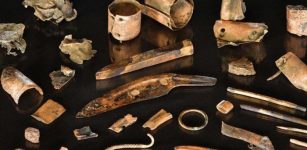 Unique Belongings Of Bronze Age Warrior Offer Evidence Of Massive Violent Conflict In Europe
Archaeology | Oct 18, 2019
Unique Belongings Of Bronze Age Warrior Offer Evidence Of Massive Violent Conflict In Europe
Archaeology | Oct 18, 2019 -
 Spartacus: The Rise And Fall Of An Unlikely Hero
Featured Stories | Oct 4, 2022
Spartacus: The Rise And Fall Of An Unlikely Hero
Featured Stories | Oct 4, 2022 -
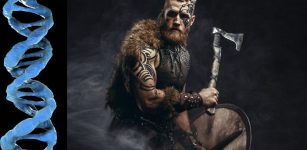 World’s Largest DNA Study Of Viking Skeletons Re-Writes Ancient History – Norse Warriors Were Not Those Who We Thought
Archaeology | Sep 16, 2020
World’s Largest DNA Study Of Viking Skeletons Re-Writes Ancient History – Norse Warriors Were Not Those Who We Thought
Archaeology | Sep 16, 2020 -
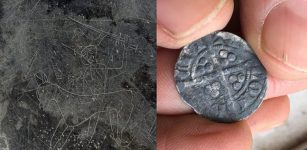 Rare Viking Graffiti And Artifacts Found In Dublin – Depiction Of God Odin Riding Sleipnir Followed By Huginn And Muninn?
Archaeology | Mar 31, 2018
Rare Viking Graffiti And Artifacts Found In Dublin – Depiction Of God Odin Riding Sleipnir Followed By Huginn And Muninn?
Archaeology | Mar 31, 2018 -
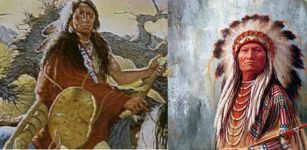 How Did Native American Indian Chiefs Get Their Names?
Ancient History Facts | May 27, 2016
How Did Native American Indian Chiefs Get Their Names?
Ancient History Facts | May 27, 2016


